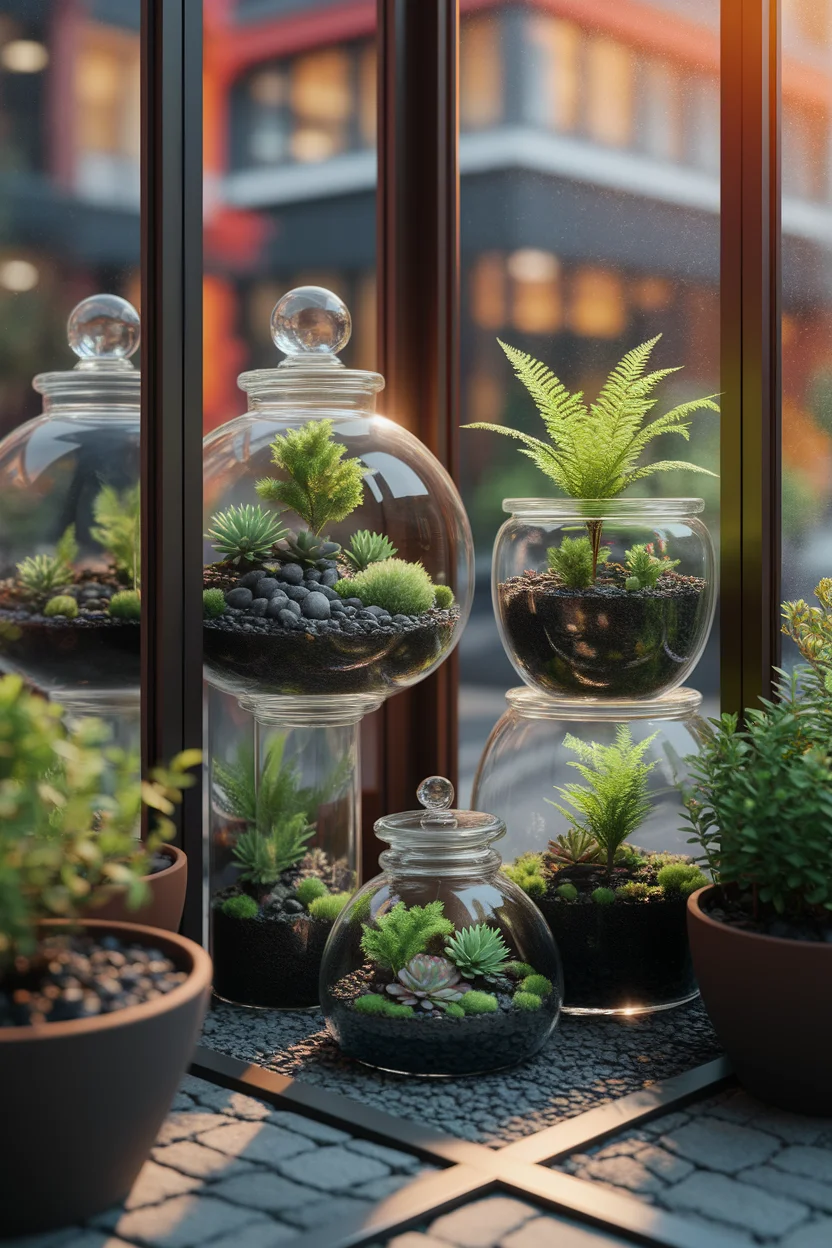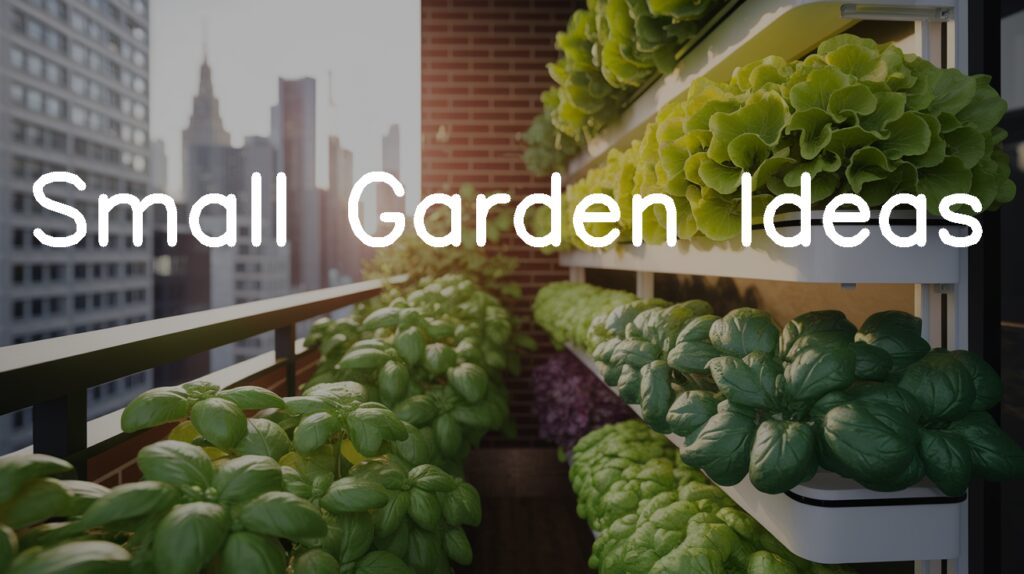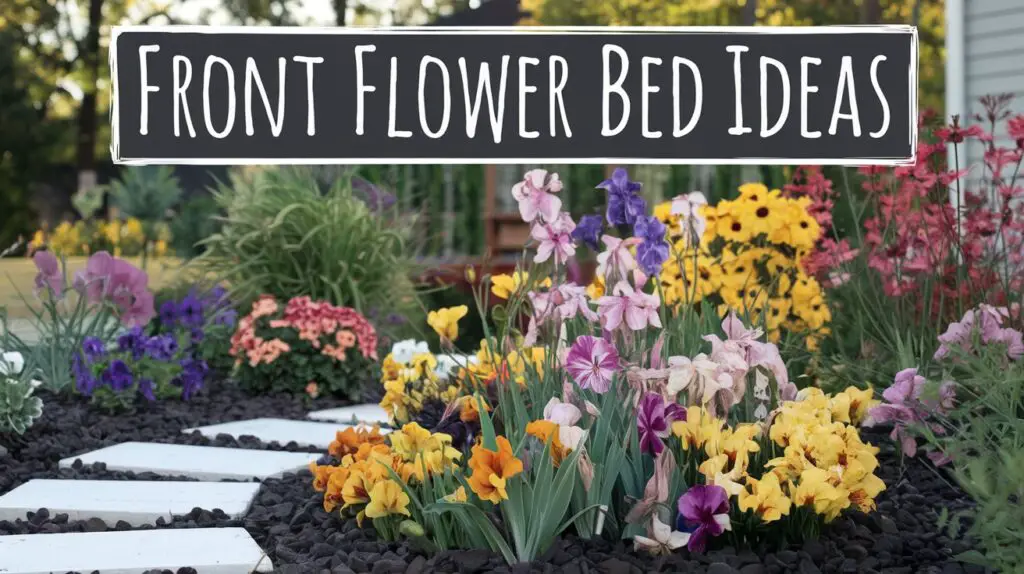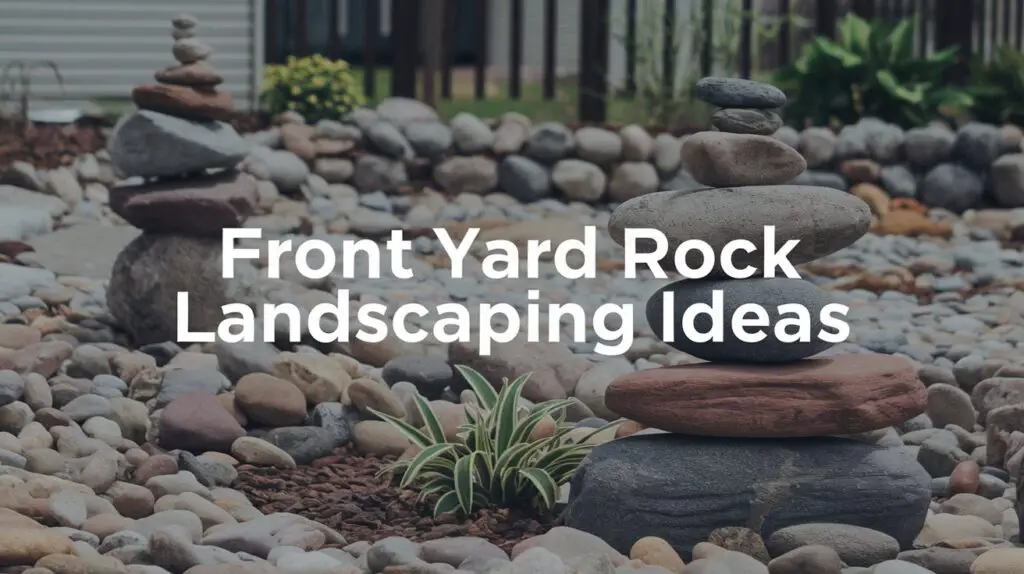In today’s fast-paced world, creating a tranquil oasis in the comfort of your own home can offer a much-needed escape. For those with limited outdoor space, small garden ideas present a perfect opportunity to harness creativity and transform even the tiniest areas into lush retreats. Whether it’s a compact balcony, a petite patio, or a narrow courtyard, inventive design and thoughtful planning can bring a touch of nature to urban environments, enhancing both beauty and well-being. Embrace the charm of small-space gardening where every square inch has the potential to blossom into a vibrant sanctuary.
Vertical Herb Garden
Maximize your space by using a vertical herb garden, which not only saves room but adds a lush, green aesthetic to your small garden area. This method allows you to grow a variety of herbs like basil, thyme, and parsley, making it both a practical and beautiful choice for small garden lovers.
How to Achieve a Vertical Herb Garden
Choose a Location
: Find a sunny spot that receives at least 6 hours of direct sunlight each day, either on a balcony, patio, or against a suitable wall.
Select Suitable Herbs
: Opt for herbs that thrive in your climate and enjoy similar sun and water requirements. Popular choices include basil, mint, rosemary, and oregano.
Select a Vertical Structure
: Use vertical planters, pallet gardens, or hanging pots. For a DIY approach, repurpose old ladders or build shelving units.
Plan Pot Placement
: Arrange pots from top to bottom, ensuring that larger and bushier plants don???t overshadow smaller ones. Ensure pots have proper drainage to prevent waterlogging.
Color Scheme
: Use neutral-colored planters like white, gray, or terracotta to make the green of the herbs stand out, or select bright planters for a vivid contrast.
Soil and Planting
: Use quality potting soil rich in nutrients and ensure each plant has enough room to grow roots.
Water and Maintain
: Regularly water the herbs, especially in hot weather, and trim them to promote healthy growth. Use mulch to retain moisture.
Harvest and Enjoy
: Regularly harvest your herbs, which encourages further growth and provides fresh ingredients for your kitchen.
This visually appealing and functional approach can transform even the smallest outdoor spaces into thriving garden zones.
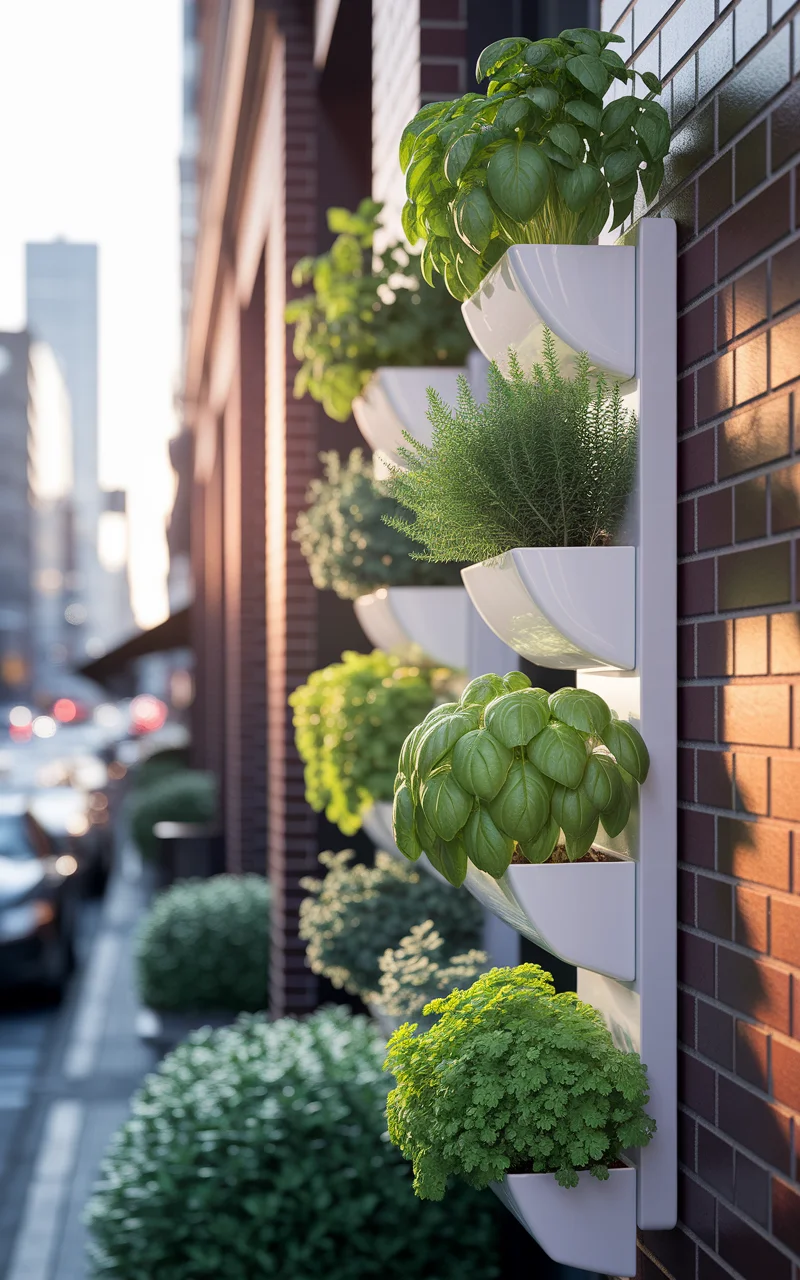
Container Water Garden
A container water garden is an innovative and serene addition to small gardens, perfect for adding a touch of tranquility and biodiversity without taking up much space. This compact, low-maintenance feature can house aquatic plants and even small fish, bringing a slice of aquatic life to urban settings or tiny backyards.
How to Achieve a Container Water Garden
Select a Container
: Choose a sturdy, waterproof container such as a large ceramic pot, half-barrel, or plastic tub. Ensure it’s deep enough to accommodate aquatic plants and, if desired, small fish.
Choose a Location
: Find a partially shaded spot that receives some sunlight but isn’t overly exposed, since too much sunlight can encourage excessive algae growth.
Install a Water Pump
: If you wish to include small fish or create a gentle water movement, install a low-voltage water pump for oxygenation and circulation.
Select Aquatic Plants
: Opt for water lilies, lotus, or floating plants like water hyacinth and water lettuce. These provide oxygen, help reduce algae, and offer visual appeal.
Add Decorative Elements
: Consider adding stones, small statues, or floating candles for added aesthetic.
Introduce Small Fish
: If desired, introduce fish such as mosquito fish or guppies to help control mosquito larvae and add life to the garden. Ensure the container is suitable for fish and has a healthy ecosystem.
Maintenance
: Regularly check water levels, trim overgrown plants, and clean the container as needed. Replace evaporated water with fresh water to maintain balance.
This peaceful and dynamic garden idea brings a unique element to small spaces, enhancing your garden’s diversity and providing a relaxing focal point.
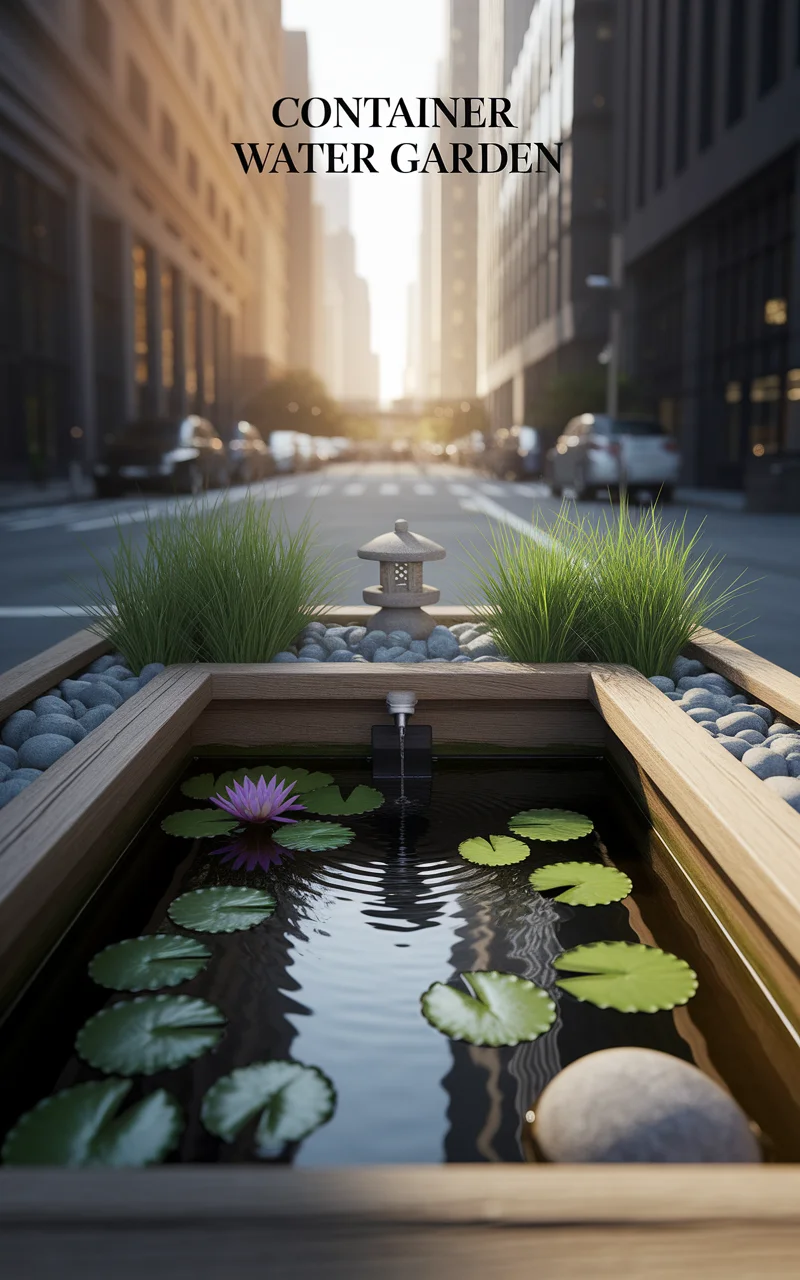
Micro Wildflower Meadow
Transform a small garden space into a vibrant micro wildflower meadow. This sustainable idea invites bursts of color and attracts pollinators like bees and butterflies, enriching your garden with life and movement. Easy to create and maintain, a micro wildflower meadow can fit into even the tiniest of garden corners.
How to Achieve a Micro Wildflower Meadow
Select a Location
: Choose an open, sunny area in your garden. Wildflowers thrive in sunlight, so ensure the spot receives at least 4-6 hours of sun daily.
Prepare the Soil
: Clear the area of weeds and grass. Loosen the soil using a fork to ensure proper drainage and aeration. You may add a thin layer of compost to enrich the soil if necessary.
Choose Your Seed Mix
: Select a seed mix suitable for your climate, containing a variety of native wildflowers. Opt for a balanced mix of annuals and perennials to ensure continuous blooms throughout the seasons.
Sow the Seeds
: Scatter the seeds evenly over the prepared soil. Lightly rake them into the soil, ensuring they are not buried too deep. Water gently to help them settle.
Water and Maintain
: Water the area regularly, especially during dry spells, to promote growth. Once established, wildflowers typically require minimal care. Avoid fertilizers as they can encourage weeds.
Color Scheme
: Embrace the natural riot of colors provided by wildflowers, ranging from bright yellows and reds to soft pinks and purples, creating an eye-catching tapestry.
Enjoy the Bloom
: Watch as your garden becomes a lively habitat for wildlife. Enjoy the diverse textures and hues as the seasons change, and witness a host of pollinators drawn to your meadow.
This micro wildflower meadow offers a low-maintenance, eco-friendly, and visually stunning option for small garden areas.

Patio Citrus Trees
Bring a slice of the Mediterranean to your small garden with patio citrus trees. These compact, versatile plants are perfect for limited spaces, providing both fragrant blooms and delicious fruit. Ideal for sunny patios or balconies, citrus trees like lemons, limes, and oranges can thrive in containers, adding a refreshing touch to your outdoor area while offering fresh, homegrown produce.
How to Achieve Patio Citrus Trees
Choose the Right Variety
: Select dwarf or patio-specific varieties such as ???Improved Meyer??? lemon, ???Bearss??? lime, or ???Calamondin??? orange, which are well-suited for container growing.
Select Containers
: Use large pots with good drainage holes. Terracotta or ceramic pots are ideal for retaining soil moisture and providing insulation.
Potting Mix
: Use a high-quality citrus potting mix or a well-draining general purpose mix augmented with sand or perlite to maintain appropriate moisture levels.
Positioning
: Place your citrus trees in a location that receives 6-8 hours of sunlight daily. A south-facing patio or balcony is ideal.
Watering and Fertilizing
: Water regularly, ensuring the soil remains moist but not waterlogged. Use a citrus-specific fertilizer during the growing season to promote healthy growth and fruit production.
Pruning
: Regularly prune to maintain shape and remove any dead or crossing branches, which encourages healthy development and improves airflow.
Winter Protection
: In colder climates, protect your citrus trees from frost by moving pots indoors near a sunny window during winter months or wrapping them with burlap.
Color Scheme
: Complement your citrus trees with brightly colored pots or surrounding foliage plants to enhance the vibrant, cheerful appeal of the lush green leaves and bright orange or yellow fruit.
Patio citrus trees not only bring beauty and fragrance to your small space but also the joy of harvesting fresh citrus fruits right from your garden.
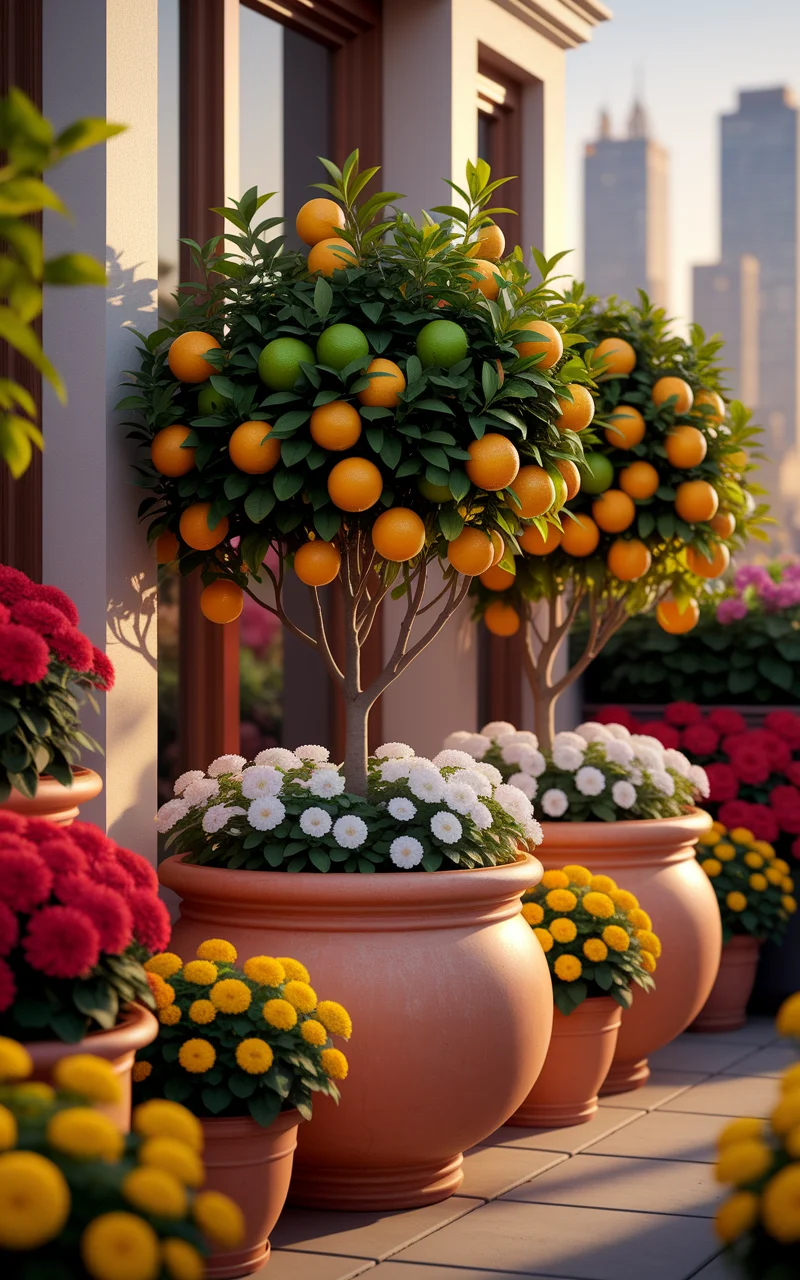
Miniature Zen Garden
A miniature Zen garden offers a tranquil escape in a small garden space, allowing you to enjoy the calming aesthetics and meditative qualities of a traditional Japanese garden. These small-scale gardens feature elements like sand, stones, and carefully selected plants to create a soothing retreat that fits perfectly on patios, balconies, or indoor spaces.
How to Achieve a Miniature Zen Garden
Select a Container
: Choose a shallow, wide container such as a ceramic tray or a wooden box. Ensure it is large enough to allow creative design but compact to fit your space.
Base Layer
: Fill the container with a layer of sand or fine gravel, which represents water or vast space in a traditional Zen garden. Smooth the surface for a uniform appearance.
Arrange Stones
: Select a few stones of varying shapes and sizes, arranging them in asymmetrical patterns to represent mountains or islands. Balance is key, so avoid overcrowding.
Add Greenery
: Incorporate small succulents or moss to introduce greenery. These plants are low-maintenance and add texture, enhancing the natural feel of your garden.
Include a Rake
: A small rake is used to create ripples in the sand, symbolizing waves and fostering mindfulness. Patterns can be changed regularly as a meditative exercise.
Personalized Touches
: Add elements like miniature bridges, pagodas, or lanterns to personalize your Zen garden while maintaining the overall theme and serenity.
Location
: Place the Zen garden in a quiet corner where you can easily sit and enjoy its tranquility. Indoor or outdoor spots with indirect sunlight work well.
Color Scheme
: Utilize a neutral palette with earthy tones like browns, grays, and greens to preserve the calming and natural aesthetic of the Zen garden.
Creating a miniature Zen garden offers a peaceful sanctuary that blends beauty with meditation, perfect for transforming small spaces into serene landscapes.
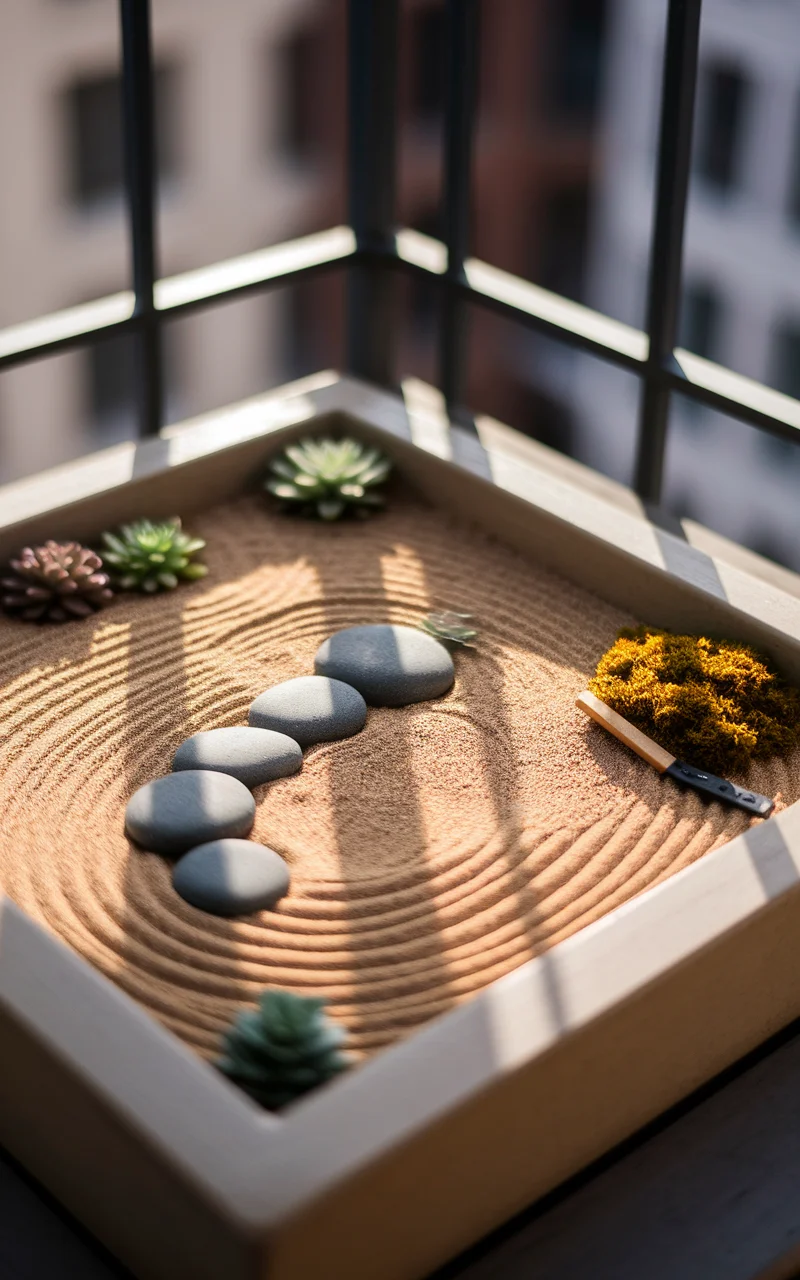
Hanging Basket Succulent Garden
Incorporate a hanging basket succulent garden to inject vibrant textures and colors into your small garden area. This space-efficient idea leverages vertical space, allowing you to display an array of succulent varieties with their unique shapes and hues. Perfect for adding greenery at different heights, these resilient plants require minimal care and thrive in sunny spots.
How to Achieve a Hanging Basket Succulent Garden
Choose Hanging Baskets
: Select sturdy baskets with adequate drainage holes. Consider wire baskets with coconut coir liners for a natural look.
Select Succulents
: Pick a variety of succulents such as echeverias, sedums, and jade plants. Ensure your choices have similar light and water needs.
Potting Mix
: Use a well-draining cactus or succulent potting mix to prevent root rot. You can amend regular potting soil with sand for improved drainage if needed.
Arrangement
: Arrange succulents, placing larger ones in the center or towards the bottom of the basket. Ensure each plant has enough space for air circulation.
Location
: Hang baskets in a spot that receives bright, indirect light or partial sunlight. Avoid overly shaded areas as succulents need ample light.
Watering
: Water infrequently, allowing the soil to dry out completely between waterings. Use a light hand to prevent waterlogging.
Color Scheme
: Embrace the natural colors of succulents, ranging from deep greens to purples and blues, contrasting these against the earthy tones of the basket.
This idea brings a touch of the desert landscape to your home, creating a lush and manageable vertical garden that enhances small spaces.
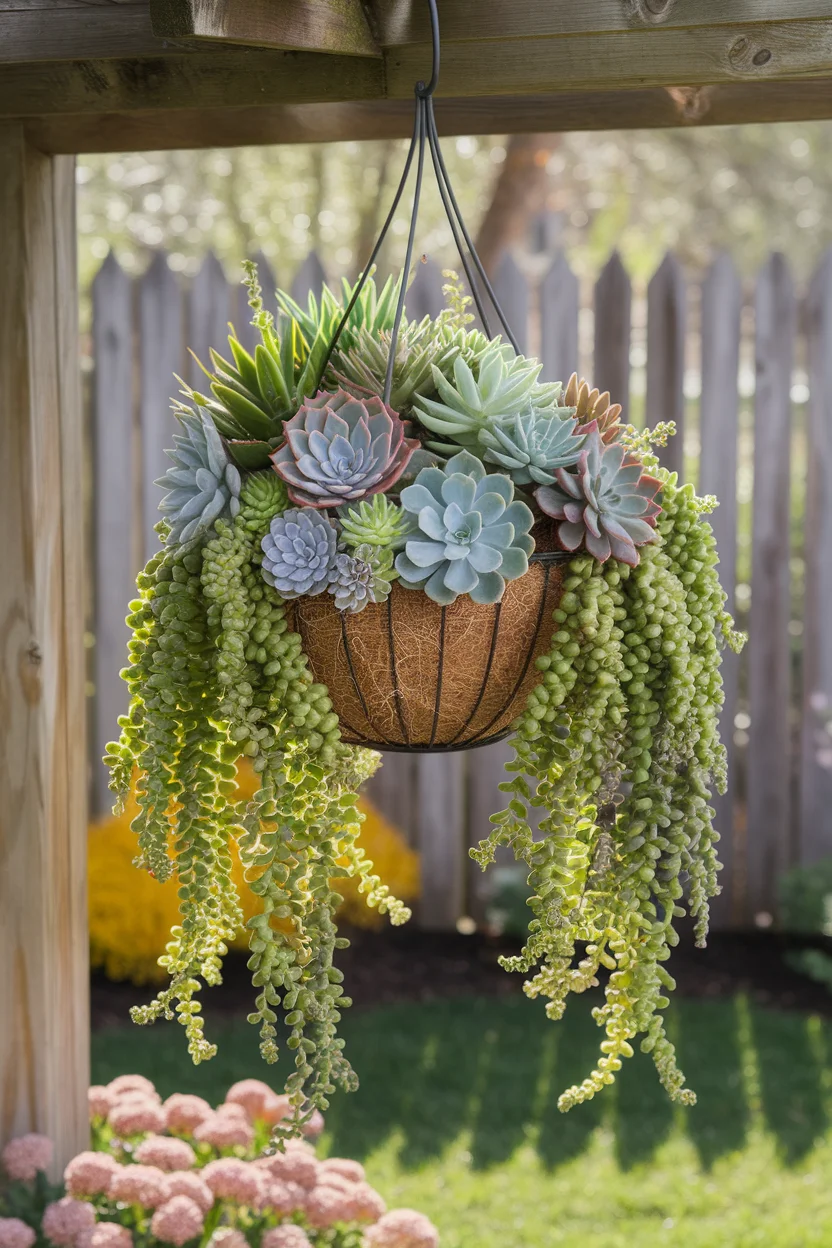
Fairy Garden in a Pot
Create a whimsical fairy garden in a pot to bring enchanting, miniaturized landscapes to your small outdoor space. This imaginative concept is easy to personalize, allowing for creative expression while requiring minimal space and maintenance. Fairy gardens provide a magical element, evoking stories and playfulness in tiny garden forms.
How to Achieve a Fairy Garden in a Pot
Select a Container
: Choose a medium to large pot with good drainage. Terracotta or clay pots offer a natural look that complements the miniature garden’s aesthetics.
Potting Mix
: Use a high-quality potting soil that retains moisture while offering good drainage to support small plants.
Choose Miniature Plants
: Select small-scale plants like dwarf ferns, mosses, or bonsai trees. Succulents also work well due to their low maintenance needs.
Design Layout
: Create a layout by arranging plants and decorative elements like pebbles, miniature figurines, or small pathways. Think of the pot as a tiny landscape.
Add Fairy Elements
: Include miniature fairy houses, bridges, or other whimsical adornments. Crafting tiny garden furniture from twigs or stones can add personal flair.
Color Scheme
: Opt for natural and earthy tones to enhance the fairy-tale element. Use greens, browns, and subtle pops of color with flowers or fairy accessories to create a cohesive design.
Maintenance
: Water your fairy garden according to the plants??? needs, usually keeping the soil moist but not waterlogged. Trim plants to maintain scale and remove any debris.
This delightful miniature garden serves as a charming centerpiece for patios or balconies, creating an inviting escape into a magical world.
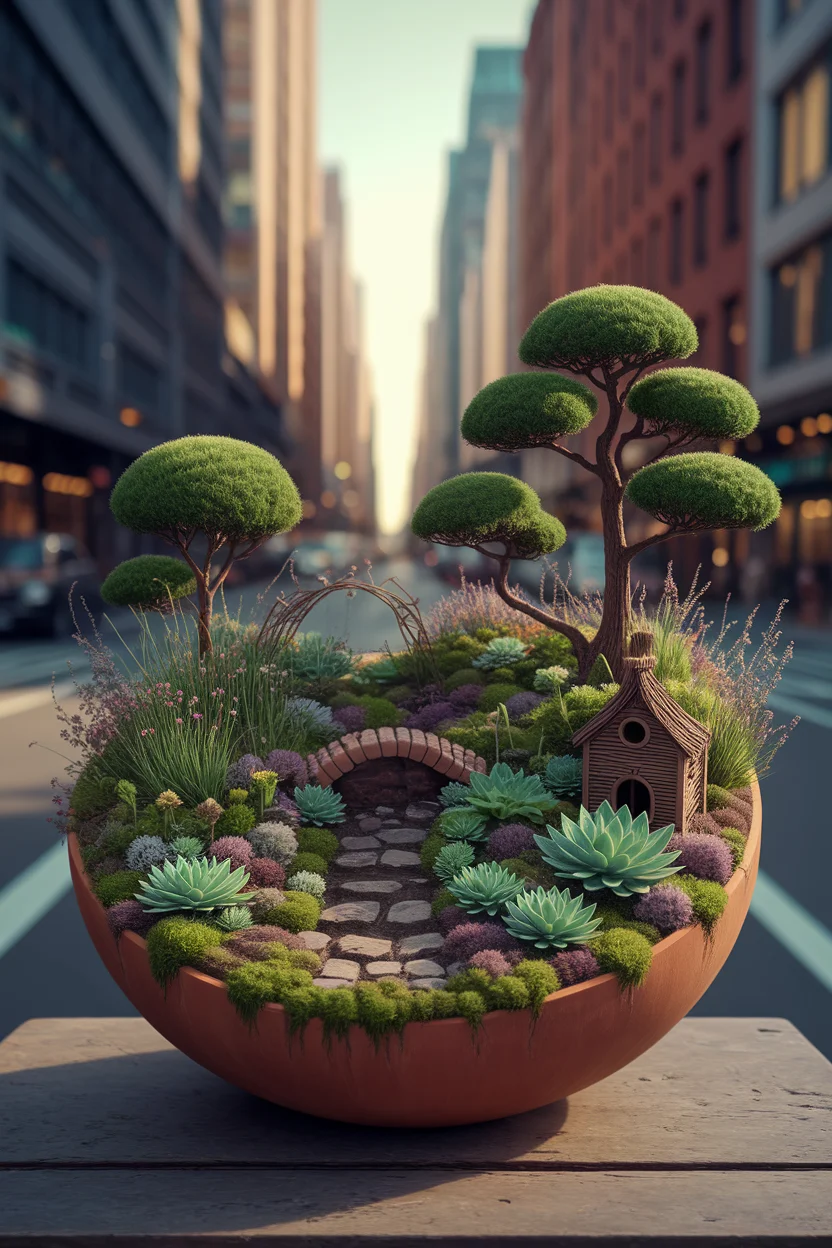
Hydroponic Kitchen Garden
Cultivate a thriving hydroponic kitchen garden to grow vegetables and herbs right in your small garden space, balcony, or kitchen. This soil-less gardening method optimizes space and water usage, making it a sustainable choice for urban dwellers. With a hydroponic setup, you can enjoy fresh produce year-round, enriching your meals with homegrown flavors.
How to Achieve a Hydroponic Kitchen Garden
Select a Hydroponic System
: Choose a system that suits your space and needs, such as a vertical tower, nutrient film technique (NFT), or deep water culture (DWC). Each offers various benefits, so consider space restrictions and plant preferences.
Choose a Location
: Find an indoor or outdoor spot with consistent lighting. A south-facing window indoors or a sunny balcony outdoors is ideal. If natural light is insufficient, consider using grow lights.
Select Plants
: Opt for fast-growing plants like lettuce, spinach, basil, and mint. These thrive in hydroponic systems and provide a continuous harvest.
Nutrient Solution
: Use a commercially available hydroponic nutrient solution, ensuring it is balanced and suited for your chosen plants. Regularly monitor pH and nutrient levels for optimal growth.
Planting
: Start with seeds or seedlings placed in net pots filled with growing medium (like rockwool or clay pellets). Place the pots into the hydroponic system, ensuring roots can access the nutrient solution.
Watering and Maintenance
: Maintain water levels and nutrient concentration in the system. Clean and sanitize equipment regularly to prevent algae and pest buildup.
Harvesting
: Harvest plants as needed, which encourages growth and keeps your garden productive. Rotate plantings to ensure a continuous supply of fresh produce.
Color Scheme
: Highlight the vibrant greens of your plants by using neutral-colored systems or containers. Consider adding decorative touches that match your kitchen’s aesthetic for a cohesive look.
This innovative gardening method transforms limited spaces into productive green oases, offering a sustainable way to grow your own food.

### Living Wall Art
Transform your small garden area into a striking visual masterpiece with a living wall art installation. This creative approach combines functionality with decorative appeal, allowing you to cultivate a vertical garden that acts as a lush, green piece of art. With a living wall, you can incorporate a variety of plant types to create textures and patterns while optimizing limited space.
How to Achieve Living Wall Art
Choose the Wall and Design
: Select a strong, sunlit wall that’s visible and accessible, where you can easily enjoy the view of your living art. Plan your design, considering the use of patterns or color blocks to enhance visual effect.
Select a System
: Utilize modular wall planters, pockets, or a DIY frame structure with planter boxes. Each option provides different aesthetics and maintenance levels.
Choose Plants
: Opt for a mixture of trailing, bushy, and climbing plants to create depth and interest. Ferns, succulents, and small flowering plants work well, ensuring they have compatible light and water needs.
Soil and Fertilization
: Use a light, well-draining potting mix suitable for vertical gardens. Incorporate slow-release fertilizer to maintain plant health over time.
Plan Plant Arrangement
: Strategically arrange plants based on their growth patterns and visuals. Place larger, more robust plants at the bottom, with trailing or smaller varieties higher up.
Watering System
: Consider installing a drip irrigation system or manually water the wall. Ensure the watering method reaches all plants evenly without overwatering.
Maintenance
: Regularly prune to maintain the desired shape and remove dead foliage. Monitor for pests and disease, and replace any underperforming plants.
Color Scheme
: Design your living wall using varying shades of green, or introduce plants with colorful leaves and flowers to create a vibrant and dynamic display.
This living wall art concept converts any small garden area into a captivating space, merging nature with creative artistry while enhancing vertical gardening efficiently.
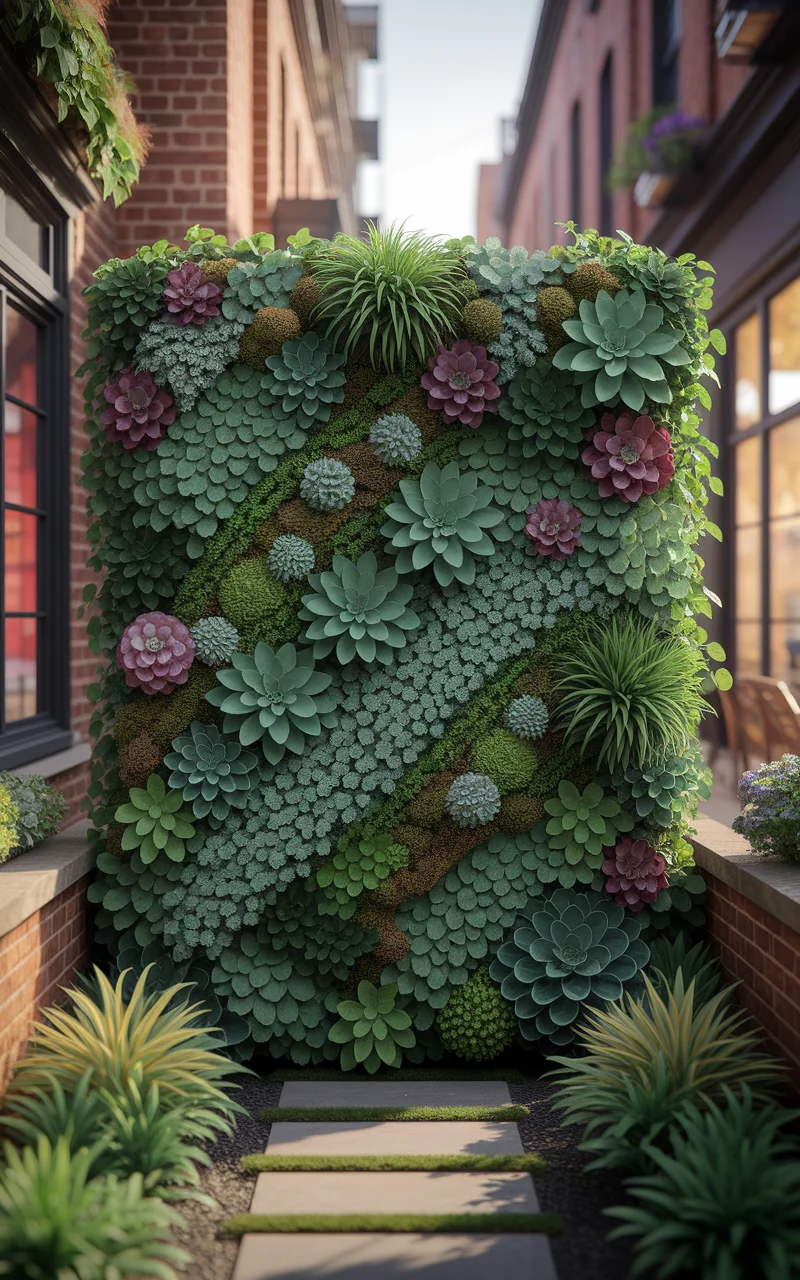
“`
Terrarium Corner
Embrace the charm of a miniature ecosystem with a terrarium corner in your small garden space. Terrariums offer a unique way to bring the beauty of nature indoors or onto a small patio, creating a self-sustaining environment in glass containers. With a terrarium, you can experiment with a variety of plants, arranging them to create a captivating green space that requires minimal maintenance.
How to Achieve a Terrarium Corner
Select the Glass Containers
: Choose clear glass containers such as jars, bowls, or geometric shapes with wide openings. These allow light to penetrate and offer a clear view of the miniature landscape.
Choose Plants
: Opt for small, slow-growing plants that thrive in humid environments, like ferns, mosses, or mini succulents. Ensure the plants have similar light and water requirements.
Base Layers
: Start with a layer of small stones or pebbles for drainage, followed by activated charcoal to prevent odors and fungi. Add a layer of moss to separate the charcoal and potting soil.
Soil
: Use a potting mix suited for your choice of plants. For succulents, mix in sand to improve drainage.
Design the Arrangement
: Plant taller plants towards the back and shorter ones in front. Use decorative stones, small logs, or miniature figures to embellish the landscape.
Location
: Place the terrarium in a bright area with indirect light. Avoid direct sunlight, which can overheat the terrarium.
Watering and Maintenance
: Lightly mist the plants with water to maintain humidity, but avoid overwatering. Prune any plants that begin to outgrow the space.
Color Scheme
: Utilize natural colors with your plant choices, and consider incorporating subtle pops of color through decorative elements or flowering plants.
A terrarium corner introduces a touch of greenery and tranquility to your small garden space, providing a captivating display of nature???s beauty in a compact format.
“`
